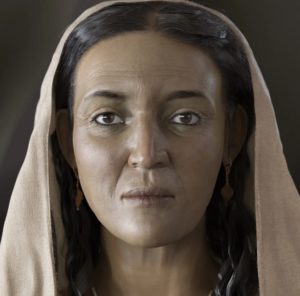São Paulo – The facial structure of a 2,000-year-old Nabataean woman from the AlUla region has been reconstructed by experts from the Royal Commission for AlUla. They used the skeleton of the woman, dubbed “Hinat,” who authorities believed died in the first century B.C.

The reconstruction has been displayed for the public in the visitor’s center at the Hegra historical site in AlUla since February 6 and aims to give visitors the opportunity to learn about the ancient history of the region, the Nabateans and their civilization.
The skeleton was discovered inside a tomb in the UNESCO World Heritage site in 2008. Human remains, skin and hair, along with textiles, leather and other substances were also discovered, as was an inscription that said that the tomb belonged to “Hinat, the daughter of Wahbu.”
Studies confirmed the importance of Hinat’s position in the Nabataean community, as she had possessed sufficient wealth to obtain her own tomb in Hegra.
A number of experts on Nabataean civilization issued a biography of Hinat, equipped with pictures of her clothes and jewelry as a background to her facial reconstruction. They were joined by a production team with experience in anthropology, reconstruction and physical model-making.
The information is from Saudi newspaper Arab News.




